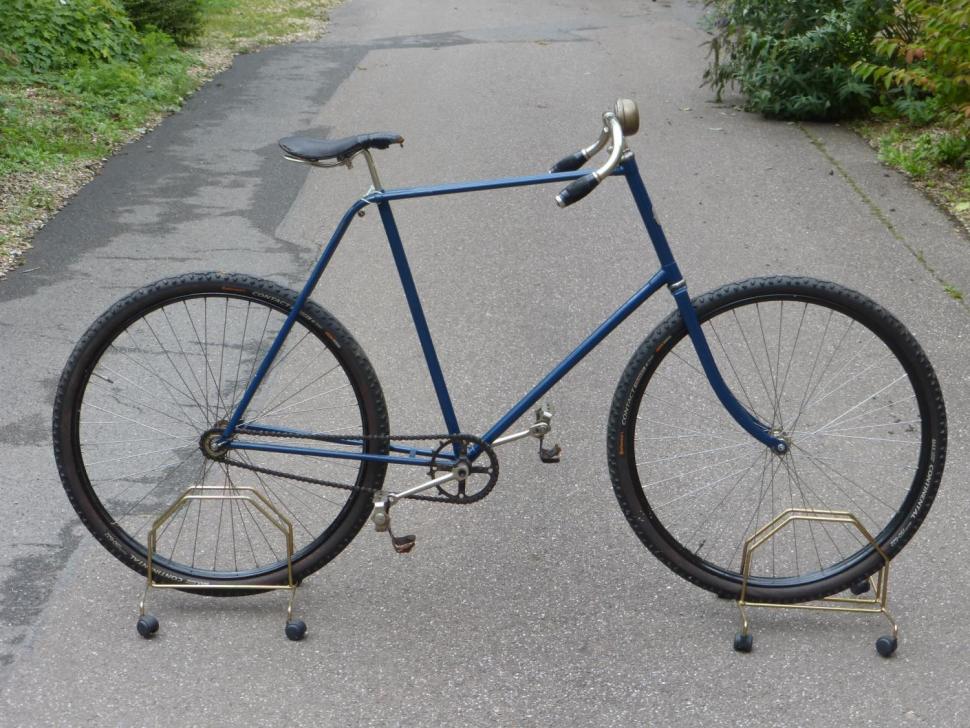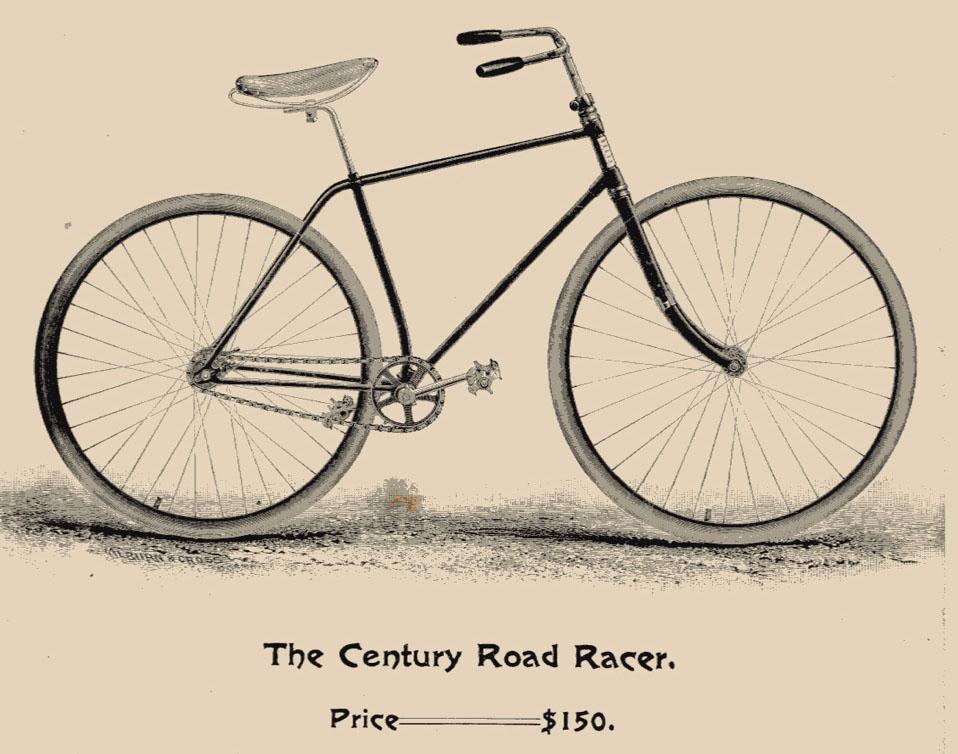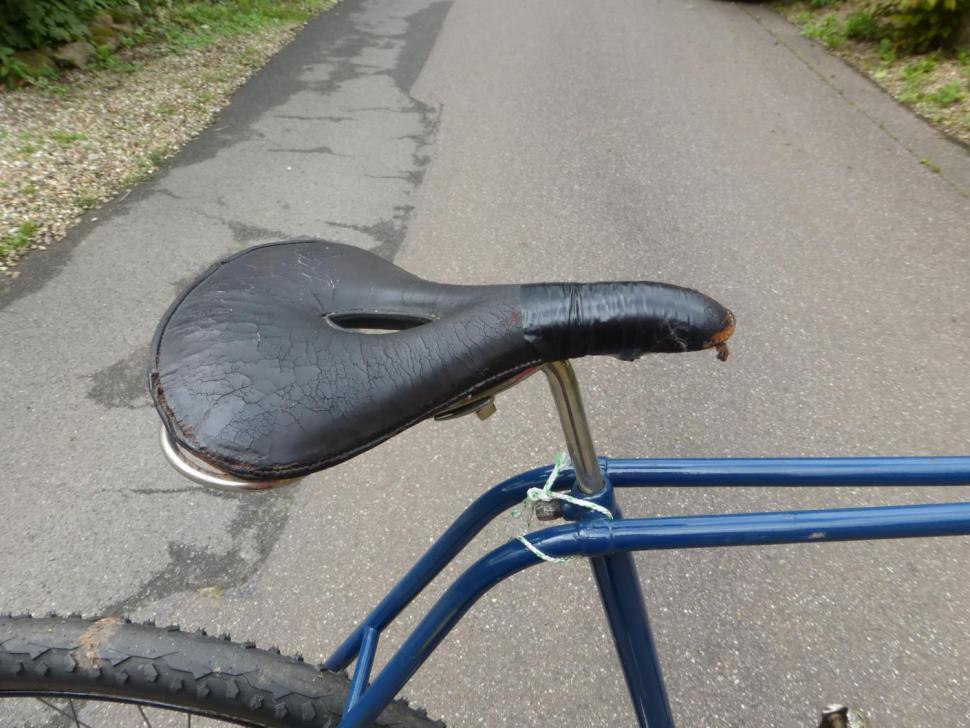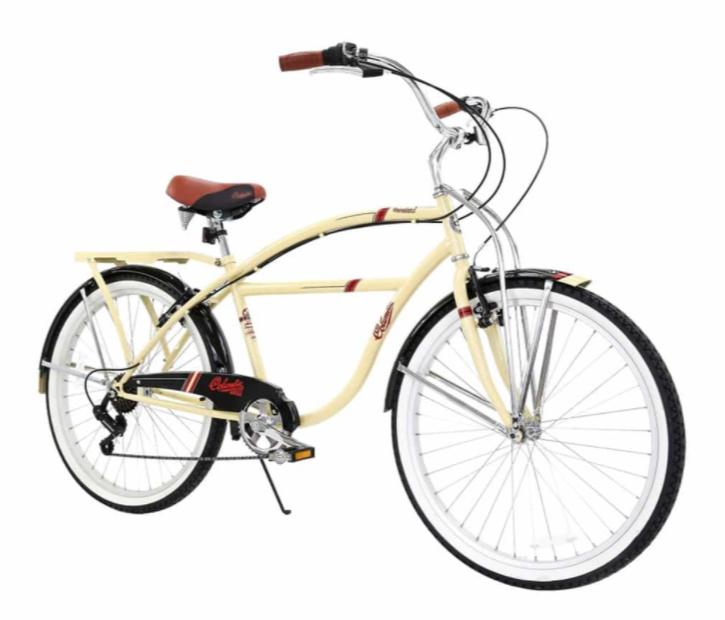- News
- Reviews
- Bikes
- Components
- Bar tape & grips
- Bottom brackets
- Brake & gear cables
- Brake & STI levers
- Brake pads & spares
- Brakes
- Cassettes & freewheels
- Chains
- Chainsets & chainrings
- Derailleurs - front
- Derailleurs - rear
- Forks
- Gear levers & shifters
- Groupsets
- Handlebars & extensions
- Headsets
- Hubs
- Inner tubes
- Pedals
- Quick releases & skewers
- Saddles
- Seatposts
- Stems
- Wheels
- Tyres
- Tubeless valves
- Accessories
- Accessories - misc
- Computer mounts
- Bags
- Bar ends
- Bike bags & cases
- Bottle cages
- Bottles
- Cameras
- Car racks
- Child seats
- Computers
- Glasses
- GPS units
- Helmets
- Lights - front
- Lights - rear
- Lights - sets
- Locks
- Mirrors
- Mudguards
- Racks
- Pumps & CO2 inflators
- Puncture kits
- Reflectives
- Smart watches
- Stands and racks
- Trailers
- Clothing
- Health, fitness and nutrition
- Tools and workshop
- Miscellaneous
- Buyers Guides
- Features
- Forum
- Recommends
- Podcast
feature
 Pope MFG model 38 1 - via the saleroom
Pope MFG model 38 1 - via the saleroomBike at Bedtime: Pope Manufacturing Co. Columbia Century
After we reported on a huge auction of vintage bikes and cycling memorabilia that took place earlier this week, we thought it was only right to feature one of the items that went under the hammer for a special edition of Bike at Bedtime... so without further ado, let's delve into the details of the Columbia Century, with this particular 1894 model pictured above selling for £1,300 in The Saleroom's online auction.
> Bike(s) at bedtime: Italian tradesmen's bikes
Although it's described as a 'Columbia Model 38' in the auction listing, looking at this poster uploaded to The Online Bicycle Museum, and browsing the heritage section of the Columbia Bicycles website, it appears to be a Columbia Century, which debuted in 1892. Columbia was the name given to bikes made by Pope Manufacturing Co, who started out importing bicycles from Britain in the 1870s. Developing its own high-wheeler soon after, Colonel Albert Augustus Pope moved to producing safety bicycles at the start of the 1890s, and purchased the Hartford Rubber Works so he could manufacture pneumatic tyres, invented by John Boyd Dunlop a few years earlier.
As you can see in this poster, the Century was built around 28 inch wheels, with a 25t chainring up front and an 8t sprocket on the rear (an 87.5 inch gear).
Heavily restored with a blue-enamelled paint job and modern Continental Contact tyres (see this eBay listing for an example of a Century in proper antique condition) the bike that sold in The Saleroom's auction retains components that would have appeared on the bike as it was originally sold, such as the double-roller chain, leather saddle and American style rat trap pedals.
The auctioneers say that the bike originally came with 'cushioned tyres' (solids that were stuck to the rims). According to Online Bicycle Museum, many customers still chose solid tyres because pneumatics were a very expensive option in the 1890s, even though Pope Manufacturing would have offered this bike with pneumatics in 1894.
The 18-inch curved handlebars are an early take on drops, suggesting the bike would have been used for racing. Other illustrations from the time show the Century with flat bars; but like the tyres, customers would likely have just chosen which one they preferred when ordering.
Another neat feature is the Lucas LSD bell (not hallucinogenic, as far as we know), the ideal accessory for Victorian hoodlums to alert pedestrians of their presence as they tore through the streets.
So, what became of Pope Manufacturing? Well Colonel Pope met his maker in 1909, and his company continued but went bust in 1915. It rose from the ashes as the Westfield Manufacturing Company soon after, a name that stood until 1961 when it was renamed Columbia Manufacturing Company. That went bust in 1991 but resurfaced as Columbia in 1993, manufacturing a reproduction of the 1941 Columbia Superb at its plant in Westfield, Massachusetts, and also selling a range of Columbia-badged imported bikes too.
Today Columbia Manufacturing's Westfield plant is one of the biggest producers of school and 'institutional' furniture in the US, and the Columbia bike brand lives on as a subsidiary of Ballard Pacific: "Throughout all of the bankruptcies and name changes, Columbia has never ceased production for long periods and the company that exists today is a direct descendant of the original Pope Manufacturing Co.", says Columbia... although at the time of writing Columbia's online store is down, and bikes are only available in the US through Amazon, Target and Dick's Sporting Goods.
Jack has been writing about cycling and multisport for over a decade, arriving at road.cc via 220 Triathlon Magazine in 2017. He worked across all areas of the website including tech, news and video, and also contributed to eBikeTips before being named Editor of road.cc in 2021 (much to his surprise). Jack has been hooked on cycling since his student days, and currently has a Trek 1.2 for winter riding, a beloved Bickerton folding bike for getting around town and an extra beloved custom Ridley Helium SLX for fantasising about going fast in his stable. Jack has never won a bike race, but does have a master's degree in print journalism and two Guinness World Records for pogo sticking (it's a long story).
Latest Comments
- cyclefaster 3 sec ago
I'm not paying any more. Like I said many cycling fans are also sports fans who have a sports package with their TV. I had Eurosport for years,...
- ErnieC 3 hours 58 min ago
Good man, well done!
- David9694 9 hours 49 min ago
+1 on saddle height and also check your lateral alignment - everything should be straight and aligned. My bike fit years ago moved my feet to the...
- froze 9 hours 53 min ago
Everything Lezyne sells are really good, especially their pumps, and the Torque Drive. ...
- wtjs 10 hours 37 min ago
It's not only the UK which suffers from vile louts-VdP is a great athlete who deserves respect!
- Hirsute 11 hours 12 min ago
https://www.youtube.com/watch?v=wOzP87HVCWw
- Rendel Harris 12 hours 39 min ago
Apart from the fact that you're completely wrong - Decathlon is a French company and has 1045 stores in Europe compared to 50 in the UK - whilst...
- hawkinspeter 14 hours 45 min ago
Finally tried out the Smart Lever that I did get for Xmas as I had a suspicious looking bubble/bump on my rear GoodYear tyre (don't think I'll buy...
- pockstone 15 hours 10 min ago
Suitable reply, No Reply.
- chrisonabike 17 hours 47 min ago
Further motoring exemptions have been highlighted by a certain celebrity lawyer: needing the loo, being a well-known footballer...






Add new comment
2 comments
Fascinating. Whole bike has the rider shifted back over the rear wheel, primarily to accommodate those drop bars. Whole bike is long and slack. And $150 in 1890-ish? That's superbike money - about $4k!
Very interesting, I love seeing early bike tech. If that is indeed an original saddle with the cutaway portion in the middle, then it is further evidence that there is generally very little advancement today that hasn't been tried a hundred years before.